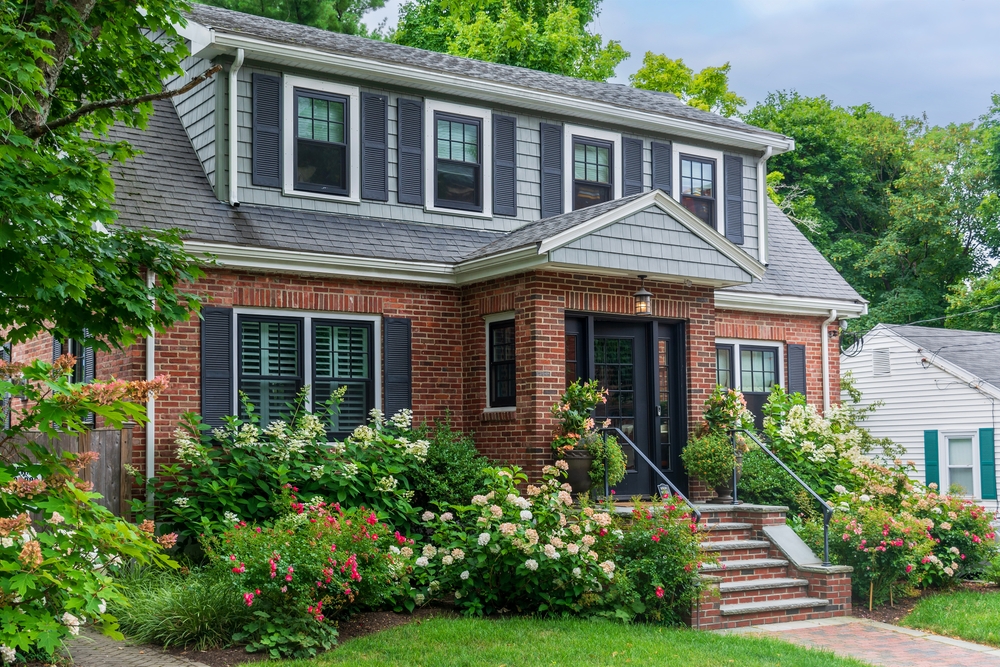
Key Takeaways:
- PMI is required on conventional loans with less than 20% down.
- It adds to your monthly costs but can be removed once you reach 20% equity.
- You can avoid PMI with a larger down payment, VA loan, or piggyback loan.
If you’re buying a home and planning to put down less than 20%, chances are you’ve come across the term PMI. But what is it, why do you need it, and how much will it actually cost you? Whether you’re purchasing a home in Denver, CO or looking at homes for sale in Tampa, FL, understanding PMI is key to budgeting smart.
In this Redfin article, we’ll break down everything you need to know about private mortgage insurance (PMI) – including how to avoid it or remove it when the time is right.

What is private mortgage insurance (PMI)?
PMI stands for private mortgage insurance. It’s a type of insurance that protects your lender, not you, if you stop making payments on your mortgage.
Lenders require PMI on conventional loans when your down payment is less than 20% of the home’s purchase price. While it helps you buy a home with a smaller upfront investment, it adds to your monthly costs.
Why do lenders require PMI?
PMI reduces the lender’s risk. When you put down less than 20%, you’re considered a higher-risk borrower. PMI provides the lender a financial safety net in case you default on your loan.
Types of private mortgage insurance
There are several types of PMI, and the right one for you depends on your financial situation and lender policies:
- Borrower-paid PMI (BPMI): This is the most common type. You pay the premium as part of your monthly mortgage payment. It can be canceled once you reach 20% equity.
- Lender-paid PMI (LPMI): The lender pays for the insurance, but you’ll typically get a higher interest rate in return. This type can’t be canceled, removing it requires refinancing.
- Single-premium PMI: You pay the entire premium upfront at closing, either in cash or financed into your loan. It lowers your monthly payment but carries risk if you sell or refinance early.
- Split-premium PMI: A mix of upfront and monthly payments. You pay part of the premium upfront and the rest in monthly installments.
Understanding the differences can help you choose the most cost-effective option based on how long you plan to stay in the home and your budget.
How much does PMI cost?
The cost of PMI depends on a few factors, including your loan amount, credit score, and down payment. But here’s a general idea:
- Typical PMI cost: 0.3% to 1.5% of the original loan amount per year
- Example: On a $300,000 loan, PMI might cost $75 to $375/month
Tip: You can sometimes reduce PMI rates by improving your credit score or putting down more money upfront.
Ways you can pay for PMI?
PMI can be paid in different ways, depending on the loan and lender:
- Monthly premium (most common): Included in your monthly mortgage payment
- Upfront premium: Paid at closing
- Hybrid: Some paid upfront, some monthly
Your lender will explain your options during the loan application process.
When and how can you remove PMI
PMI isn’t permanent. You can remove it once you’ve built enough equity in your home.
You can request PMI cancellation when:
- You’ve reached 20% equity in your home (based on the original purchase price)
- You have a good payment history
- Your mortgage is current
PMI is automatically removed when:
- You reach 22% equity in your home (if you’re current on payments)
You can also refinance your mortgage if your home value has increased significantly, allowing you to eliminate PMI sooner.
Check out our guide: How Much Equity Do I Have in My Home? Here’s How to Calculate Home Equity

How to avoid PMI altogether
Here are a few ways to skip PMI when buying a home:
- Put down at least 20% on a conventional loan
- Consider lender-paid PMI (LPMI): The lender covers the insurance but typically charges a higher interest rate
- Use a piggyback loan: Take out a second loan to cover part of the down payment
- Explore VA loans (for eligible veterans and service members), which don’t require PMI
PMI vs. other types of mortgage insurance
Not all loans use PMI. When researching mortgage insurance, it’s easy to confuse PMI with other similar-sounding terms. Here’s a quick breakdown of the differences:
| Loan Type | Insurance Type | Required If… |
| Conventional | PMI | Down payment < 20% |
| FHA | MIP (Mortgage Insurance Premium) | Always required, regardless of down payment |
| VA | No PMI | May require a funding fee |
| USDA | Guarantee Fee | Similar to PMI, required for all USDA loans |
What’s the difference between PMI, MIP, and MPI?
- PMI (Private Mortgage Insurance): Required for conventional loans when your down payment is less than 20%. Protects the lender if you default.
- MIP (Mortgage Insurance Premium): Required for FHA loans. Unlike PMI, MIP is typically required for the life of the loan, unless you refinance.
- MPI (Mortgage Protection Insurance): Optional insurance that pays your mortgage if you become disabled, lose your job, or pass away. This protects you or your family, not the lender.
Understanding these terms can help you choose the right loan product and avoid unnecessary confusion during the mortgage process.
Is PMI worth it?
PMI increases your monthly housing costs, but it can be a worthwhile tradeoff if it helps you become a homeowner sooner. This is especially in fast-growing markets, where home prices may rise faster than you can save for a 20% down payment.
It’s not ideal for every buyer, but if you’re financially stable and plan to stay in your home long enough to build equity, PMI can be a short-term cost with long-term benefits.
Pros of PMI:
- Buy a home sooner: Avoid waiting years to save a full 20% down payment.
- Start building equity right away: Rising home values may outpace your savings rate.
- PMI can be temporary: Most borrower-paid PMI can be removed once you reach 20% equity.
- Potential tax deduction: PMI premiums may be deductible (consult a tax advisor).
Cons of PMI:
- Added monthly cost: Can range from $75 to $375/month or more, depending on your loan.
- Doesn’t protect you: PMI covers the lender, not the borrower, in case of default.
- Harder to remove in some cases: For example, lender-paid PMI (LPMI) requires refinancing.
The post Private Mortgage Insurance (PMI): What It Is, How It Works, and How to Get Rid of It appeared first on Redfin | Real Estate Tips for Home Buying, Selling & More.